FNIRSI DMC-100 Clamp Meter and Digital Multimeter
Every now and then, when diagnosing electric problems it is necessary to determine if and how much current is flowing in the circuit. Often times, one can insert a multimeter into the circuit and take a measurement that way. But most multimeters are limited to 10 amps. And some circuits are difficult to insert a multimeter. Clamp meters are the solution to these problems, but we don't need one often enough to purchase one.
I have been seeing ads for FNIRSI test equipment. Everything looks pretty good and the prices are very low. They are running special pricing on many models. I bought one of their digital clamp meters. Curious about it, I decided to do a few tests and a quick comparison with my standard bearers, my old HP 974A and BK Precision 2712.
First test was a simple voltage measurement of a standard 9 volt battery.
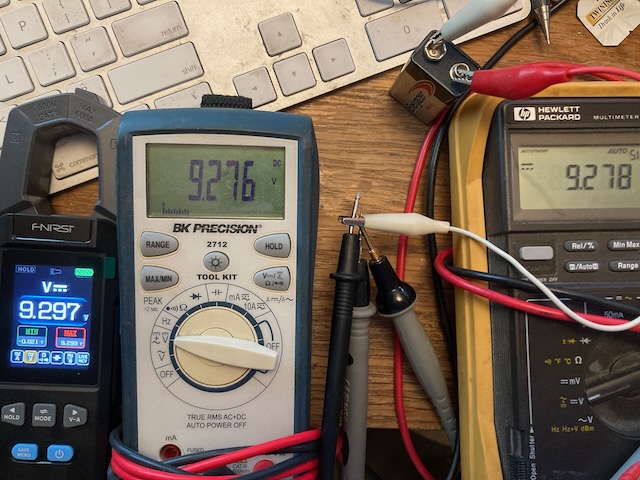
The BK Precision 2712 and the HP 974A both are pretty close 9.276 and 9.278, which is about a 0.02% difference. The DMC-100 is pretty close at 9.297 or 0.2% difference from the average of the other two. Pretty good for a $35 meter!
I used an old TrippLite power supply for the next checks. It's designed to output a clean and regulated 13.8 volts DC. Let's see...
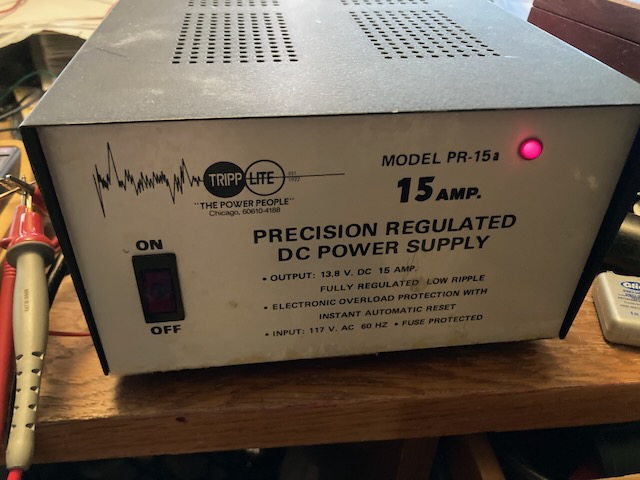
|
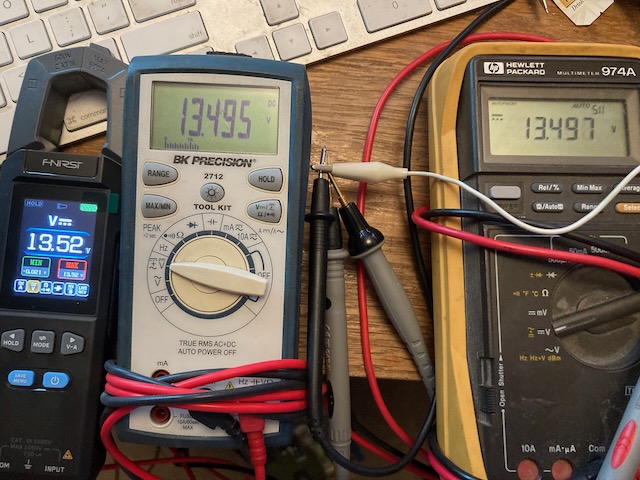
|
About the same results here. The HP and the BK Precision are within 0.002 volts from each other while the Fnirsi varies by 0.024 volts from the average of the other two, or 0.18%. Still very good.
I have a handful of 8Ω 20 watt resistors for testing purposes. These would make a good test as the current flow though the resistor should be under 2 amps and around 20 watts. Let's see!
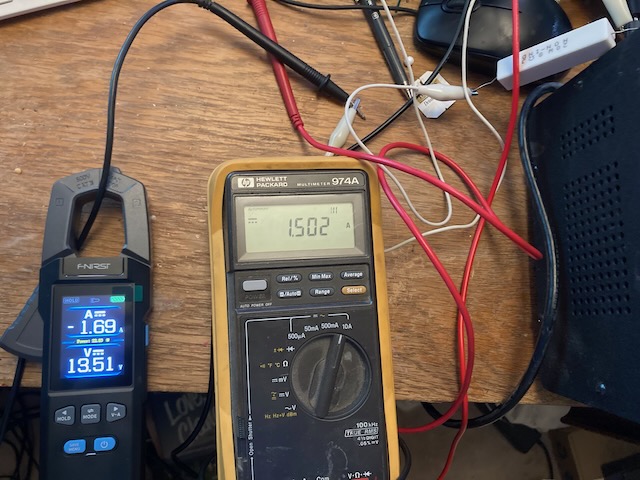
With the HP974 connected in series with the resistor, we see a current flow of 1.502 amps on the hp and 1.69 on the DMC-100, a difference of 0.188A, 12.51%, which is still good.
Calculating using Ohm's Law 13.496v ÷ 8.69Ω = 1.55A. Why the difference? The DMC-100 automatically computes power and displays the value in yellow between current and voltage values; it is hard to see. It computed power (1.69A x 13.51V) and showed total power as 22.83 watts. That's a lot of power! The resistor is hot and therefore its resistance is a bit higher than nominal and the current flow is a bit less.
Checking the resistance of the 8Ω resistor.
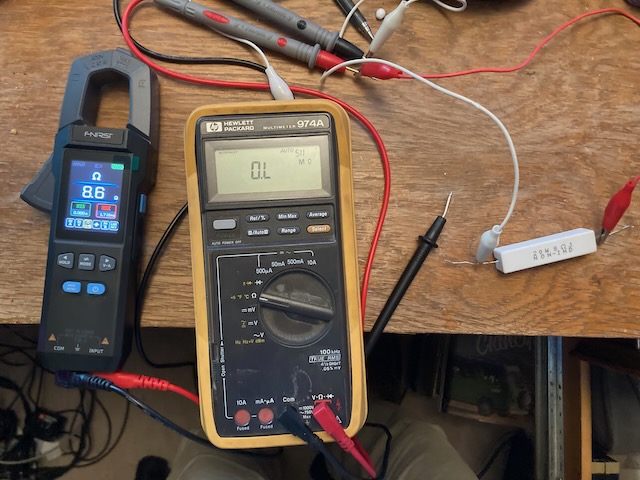
| 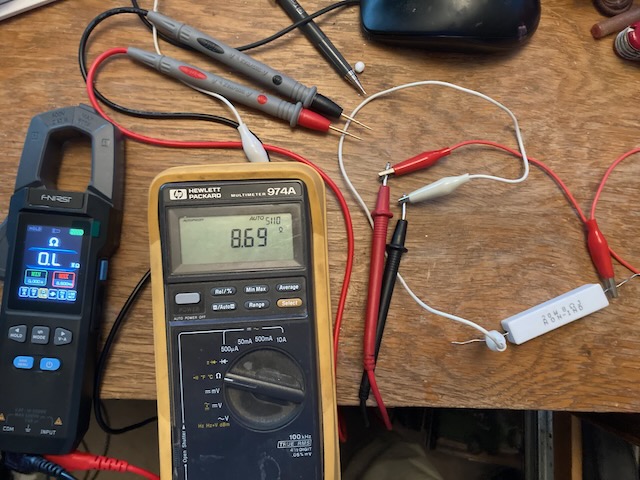
|
The Fnirsi doesn't show as many significant digits, but it is 0.09Ω different than the HP, or 1.04%. Good enough because, practically speaking, resistors of that type aren't precision and can be off by 10 or more percent. These are probably 20%.
Checking some more precise resistors, ¼ watt, 1% precision.
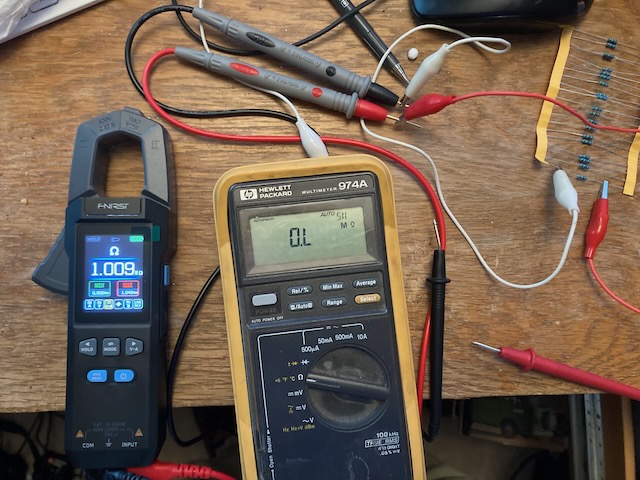
| 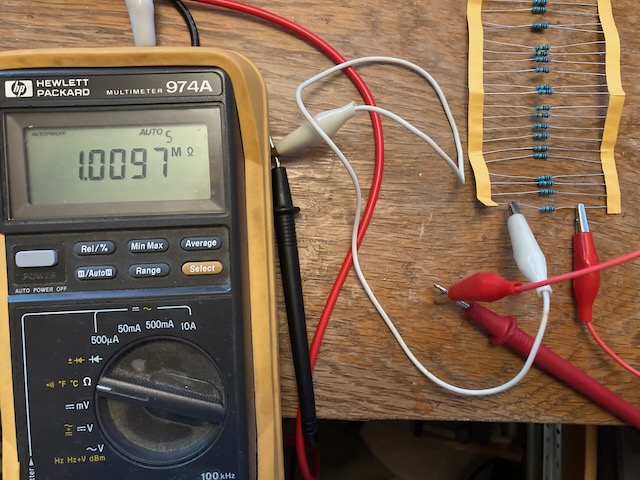
|
This is a really good result with a difference of 700Ω or 0.07%. These are 1% resistors, so the meter's accuracy is better than the precision of the resistor under test. More than good enough. Let's try a lower resistance.
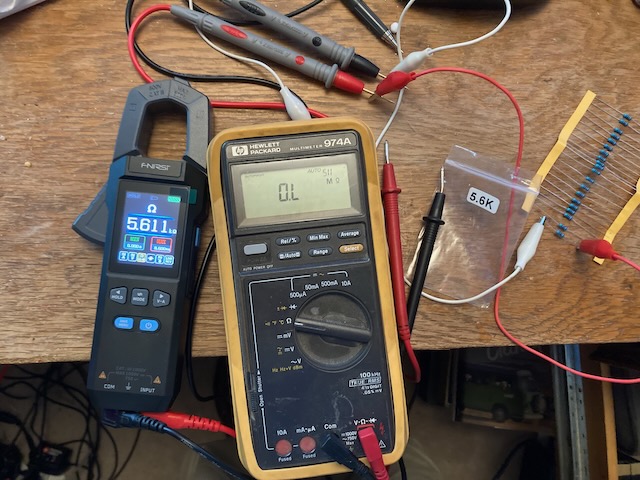
| 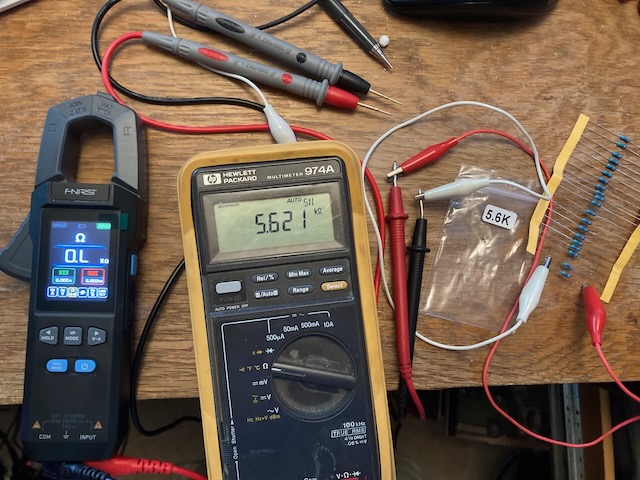
|
Again, this is a good result with a difference of 10Ω between the two or 0.18%. This is still far better than the precision of the resistor and is therefore a negligible difference.
What about the real world? I put the meter's clamp around the negative battery cable of the Jaguar's battery. I tested with the Jaguar because the battery is in the trunk and very easy to reach with sufficiently long cables. The Fnirsi DMC-100 is in current graph mode.
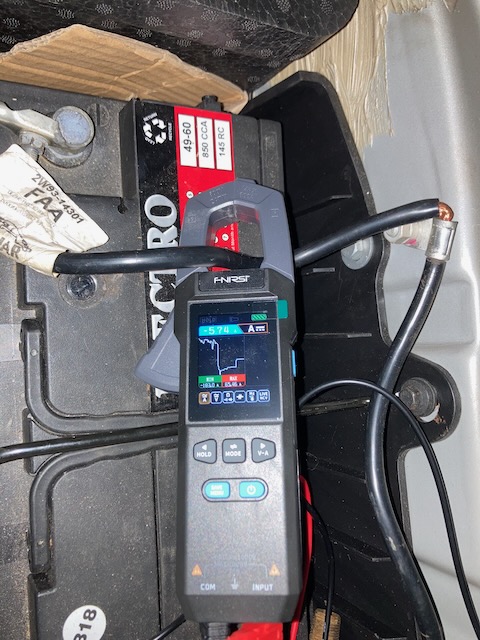
The tester is showing negative current flows that indicate battery discharging and positive values when the battery is charging. Reversing the cable though the clamp would reverse the indicated flow. Here the cable from the battery goes through the top of the clamp, then from the bottom of the clamp to ground. If it was with the cable from the battery going though the bottom of the clamp, then from the top to ground, the discharge values would be positive and the charging values would have been negative numbers.
The chart shows the initial low draw of the trunk lights being on, then a bit more current draw from the interior lights illuminating when the driver's door opened. More current draw when the ignition was switched on and a maximum draw of 183.0A when the starter cranked the engine. Once the engine started, the alternator began charging the battery with an initial rate of 65.46A that tapered down a bit as the battery charged. Then another change when the engine was shut off, ending charging.
This is very helpful information when trying to resolve a hard start, no start, or battery charging issue. Measuring current draw is also helpful when the battery keeps dying overnight or after a few days.
This was a good buy. It only arrived in yesterday's mail, so we don't know how durable it is and how well it will stand up to use, but at this point, it's a good buy. If we still like it by next summer, probably will get another to keep in the boat's toolbox. There's a lot of electrical equipment on a boat and a tool like this would be very handy.
